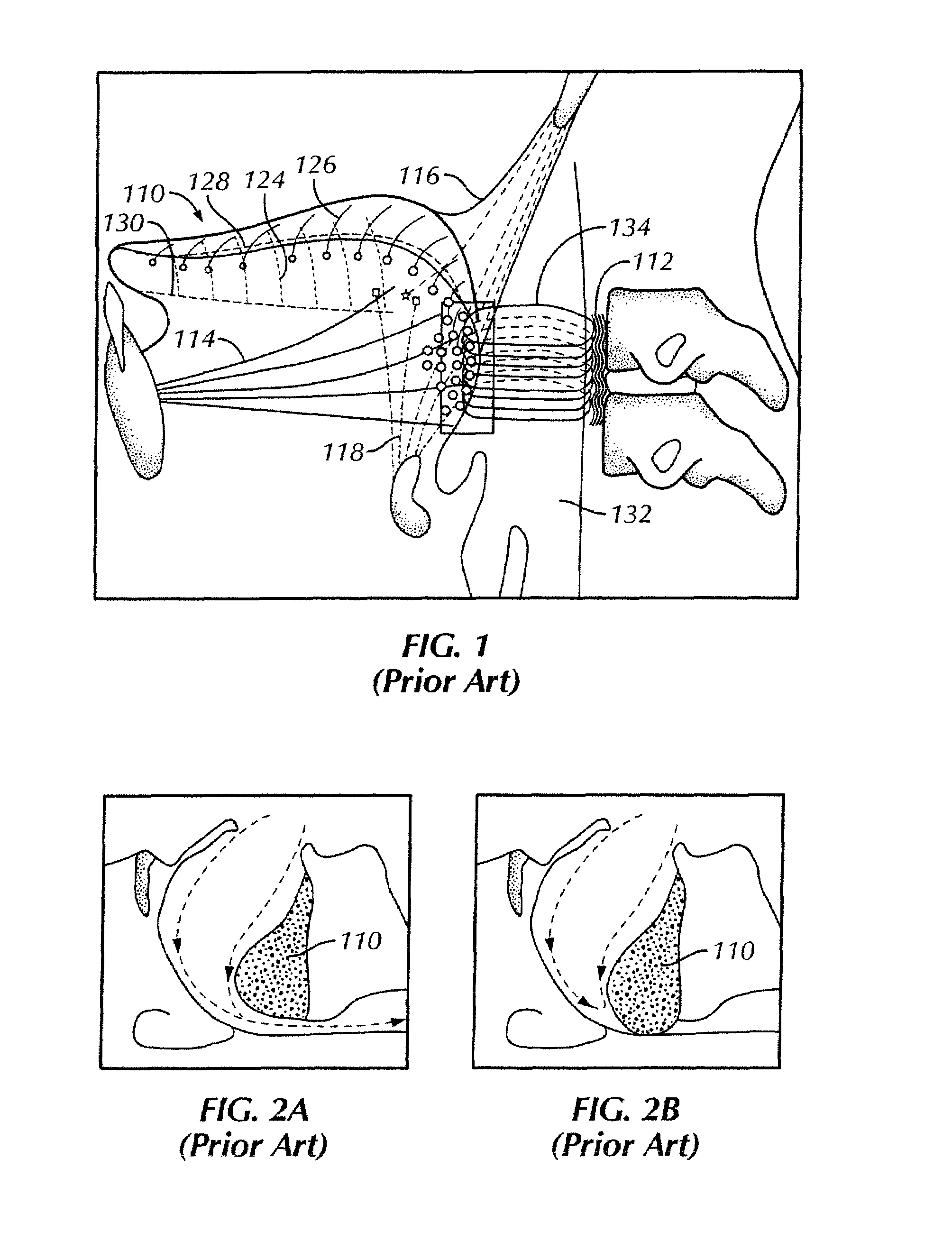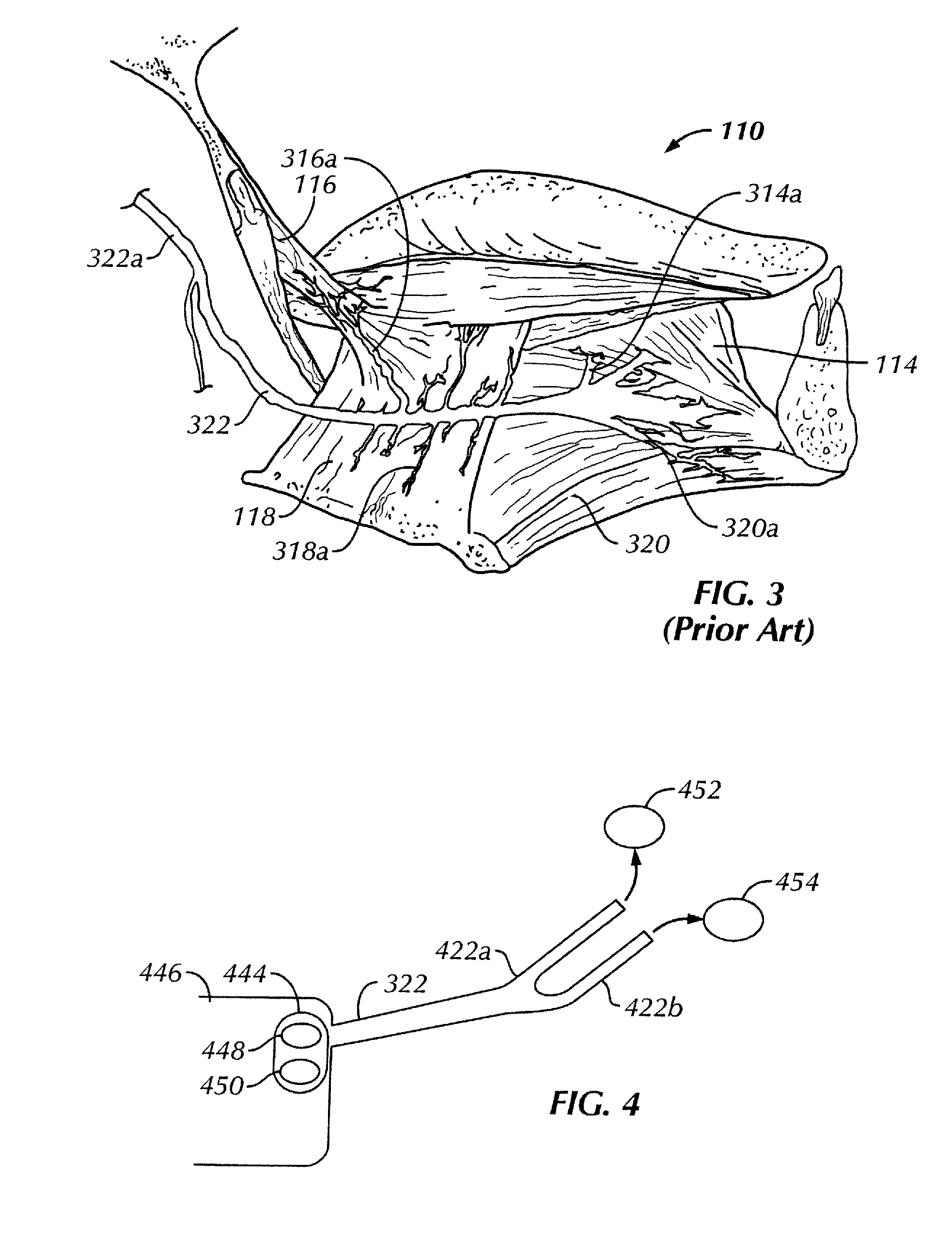Method of Stimulating a Hypoglossal Nerve for Controlling the Position of a Patient's Tongue
- Summary
- Abstract
- Description
- Claims
- Application Information
AI Technical Summary
Benefits of technology
Problems solved by technology
Method used
Image
Examples
Embodiment Construction
Tongue Muscle Properties
[0041]Referring to FIGS. 1 and 3, the tongue 110 has been described as a hydrostat—a specialized muscle able to move and change shape without the usual tendon connections to bones against which forces may be applied. Much like the trunk of an elephant, the tongue 110 can change shape and move within the oral cavity to aid in speaking, eating, and breathing. The tongue muscles include the Genioglossus muscle 114, the Styloglossus muscle 116, the Hyoglossus muscle 118, the Palatoglossus muscle (not shown), the Geniohyoid muscle 320 (the Geniohyoid muscle 320 is not a tongue muscle but it is an important protrusor and pharyngeal dilator) and several muscles that lie within the tongue, called the intrinsics. In a patient who is awake, the brain supplies neural drive to these muscles through the Hypoglossal nerve 322, to move the tongue 110 and to change its shape. The Hypoglossal nerve 322 includes a Styloglossus branch 316a, Hyoglossus branches 318a, Genioglossu...
PUM
 Login to View More
Login to View More Abstract
Description
Claims
Application Information
 Login to View More
Login to View More - R&D
- Intellectual Property
- Life Sciences
- Materials
- Tech Scout
- Unparalleled Data Quality
- Higher Quality Content
- 60% Fewer Hallucinations
Browse by: Latest US Patents, China's latest patents, Technical Efficacy Thesaurus, Application Domain, Technology Topic, Popular Technical Reports.
© 2025 PatSnap. All rights reserved.Legal|Privacy policy|Modern Slavery Act Transparency Statement|Sitemap|About US| Contact US: help@patsnap.com



